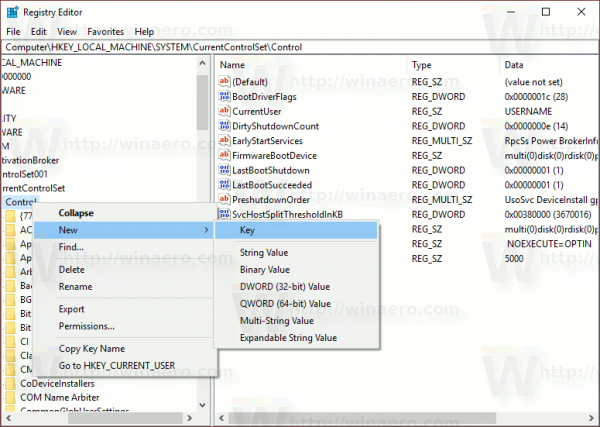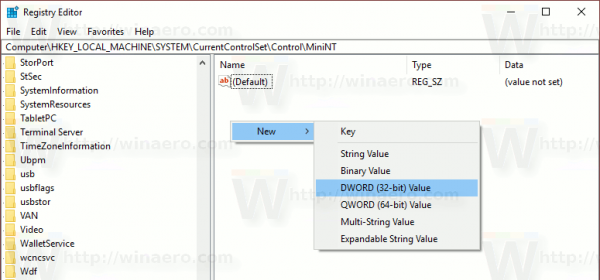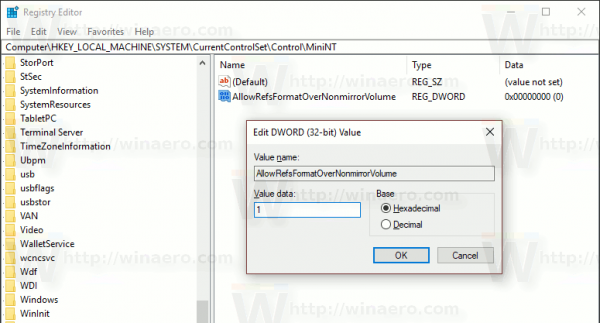Starting with Windows 8, a new file system called ReFS is included in the operating system.In this article, we'll see how to format any drive with ReFS in Windows 10.
Advertisеment
ReFS stands for Resilient File System. Codenamed "Protogon", it improves on NTFS in some respects, while also removing a number of features.
The significant functionality included with ReFS is described as follows:
- Integrity. ReFS stores data in a way that protects it from many of the common errors that can normally cause data loss. When ReFS is used in conjunction with a mirror space or a parity space, detected corruption—both metadata and user data, when integrity streams are enabled—can be automatically repaired using the alternate copy provided by Storage Spaces. In addition, there are Windows PowerShell cmdlets (Get-FileIntegrity and Set-FileIntegrity) that you can use to manage the integrity and disk scrubbing policies.
- Availability. ReFS prioritizes the availability of data. Historically, file systems were often susceptible to data corruption that would require the system to be taken offline for repair. With ReFS, if corruption occurs, the repair process is both localized to the area of corruption and performed online, requiring no volume downtime. Although rare, if a volume does become corrupted or you choose not to use it with a mirror space or a parity space, ReFS implements salvage, a feature that removes the corrupt data from the namespace on a live volume and ensures that good data is not adversely affected by nonrepairable corrupt data. Because ReFS performs all repair operations online, it does not have an offline chkdsk command.
- Scalability. As the amount and size of data that is stored on computers continues to rapidly increase, ReFS is designed to work well with extremely large data sets—petabytes and larger—without performance impact. ReFS is not only designed to support volume sizes of 2^64 bytes (allowed by Windows stack addresses), but ReFS is also designed to support even larger volume sizes of up to 2^78 bytes using 16 KB cluster sizes. This format also supports 2^64-1 byte file sizes, 2^64 files in a directory, and the same number of directories in a volume.
- Proactive Error Correction. The integrity capabilities of ReFS are leveraged by a data integrity scanner, which is also known as a scrubber. The integrity scanner periodically scans the volume, identifying latent corruptions and proactively triggering a repair of that corrupt data.
ReFS is intended for file servers only. In Windows 10, it is in fact locked for server OS only.
Windows 10 Creators Update features an updated version of ReFS. In previous Windows 10 releases ReFS version was 1.2. Windows 10 version 1703 comes with ReFS version 3.2. For compatibility reason, it is still possible to format your drives using the ReFS version 1.2.
To format a drive with ReFS in Windows 10, do the following.
- Open your registry editor (see how)
- Navigate to the following registry key:
HKEY_LOCAL_MACHINE\SYSTEM\CurrentControlSet\Control
Tip: you can access the desired Registry key with one click.
- Create a new key here called MiniNT to get the following path:
HKEY_LOCAL_MACHINE\SYSTEM\CurrentControlSet\Control\MiniNT

- Here, you should create a new DWORD value called "AllowRefsFormatOverNonmirrorVolume". The value data of this parameter must be 0 or 1. Set it to 1 to unlock the ReFS feature.


- Close the Registry editor app.
Now, execute the following command to format your drive:
format z: /u /fs:refs /i:enable
This will format your Z: drive with ReFS 3.2. Use the correct drive letter before proceeding,
format z: /u fs:refsv1 /i:enable
This will format your Z: drive with the legacy ReFS 1.2 version.
Note: The /i:enable option is mandatory for any ReFS formatting command. It enables the Integrity Streams Recovering feature.
Now, delete the MiniNT key you created. This Registry key will cause issues in Windows 10 making the operating system "think" that it is running in Preinstallation Environment (like the Windows 10 Setup program does). Delete it after you have formatted the drive with ReFS.
That's it. For Windows 8.1, see the article How to format any drive in Windows 8.1 with ReFS.
Support us
Winaero greatly relies on your support. You can help the site keep bringing you interesting and useful content and software by using these options:

AllowRefsFormatOverNonmirrorVolume is not required when formatting with ReFS 3.2. Even if it is not a mirror storage pool.
It’s only when using ReFSv1.
Is this true?
“ReFS is intended for file servers only. In Windows 10, it is in fact locked for server OS only.”
Why am i able to select ReFS in the format dialog on my Windows 10 Pro system?
I don’t want to format any of my drives right now, so i don’t know what version it would use to format, but it looks like it would support at least 1.2
i have all 3 of my drives REFS formatted and they work great
This does not work on Windows 10 Pro version 1909